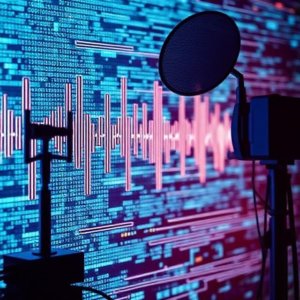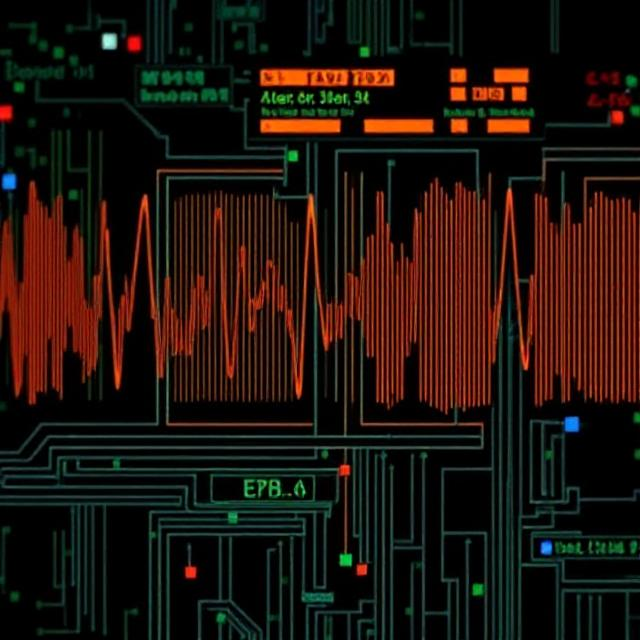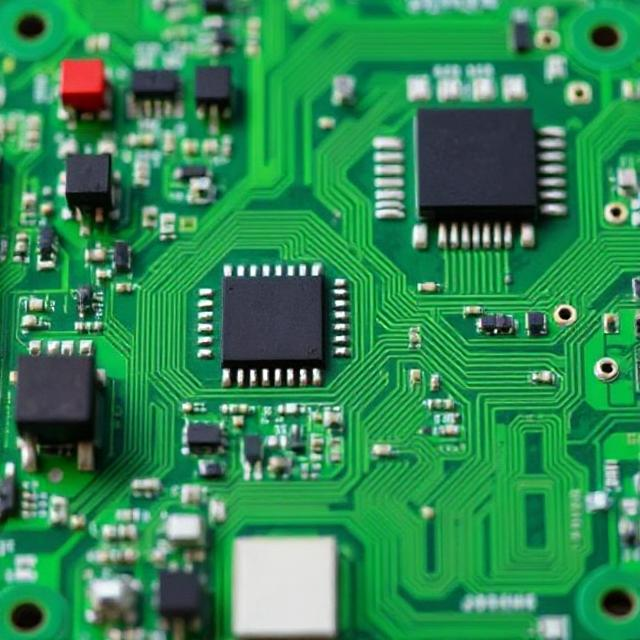What is Signal Processing?
Signal processing is the technique of analyzing, manipulating, and transforming signals to extract useful information or modify them in some way. Signals can be anything that carries information—sound, images, video, or even data from sensors.
In simple terms, signal processing helps us take raw data (or signals), clean it up, and make it more useful for things like communication, entertainment, or even scientific research.

Types of Signals:
- Analog Signals: These are continuous signals that vary smoothly over time, like sound waves or light waves.
- Example: Your voice as sound is an analog signal. It’s smooth and continuous.
- Digital Signals: These are discrete signals that are represented by binary values (0s and 1s). Digital signals come from things like computers or smartphones.
- Example: A digital audio file, like an MP3, is made up of discrete bits of data representing sound.
Types of Signal Processing:
- Analog Signal Processing:
- This deals with continuous signals like sound, light, or temperature. For example, when you listen to music on a radio, the radio is processing the analog signal that comes through the airwaves.
- Example: Filtering out unwanted noise from a radio broadcast.
- Digital Signal Processing (DSP):
- This deals with signals that are converted into digital form (using a method like sampling). Computers, smartphones, and modern electronics often use digital signal processing to manipulate signals.
- Example: A smartphone’s camera takes a photo (which is an analog signal) and converts it into a digital image that can be edited or stored on the phone.
Key Concepts in Signal Processing:
- Filtering:
- Filtering is a technique used to remove unwanted parts of a signal, like noise or interference.
- Example: When you’re on a phone call and hear static, signal processing helps reduce that static so you can hear the person clearly.
- There are different types of filters:
- Low-pass filters: Let low-frequency signals pass through and block high frequencies (like filtering out high-pitched noise).
- High-pass filters: Let high-frequency signals pass and block low frequencies (like removing a constant humming sound).
- Sampling:
- Sampling is the process of taking measurements of a continuous signal at regular intervals to convert it into a digital signal.
- Example: When you record sound, your microphone samples the sound wave at specific time intervals to create a digital version of the sound.
- Compression:
- Compression reduces the size of the signal or data for easier storage or transmission. For example, audio or video files are compressed to save space on your device.
- Example: MP3s are compressed audio files that use signal processing to reduce the file size while preserving sound quality.
- Fourier Transform:
- The Fourier Transform is a mathematical method that breaks down a signal into different frequencies (components). It helps us understand the frequency content of a signal.
- Example: In music, different instruments produce different frequencies. Fourier transforms help separate the frequencies of a guitar, drum, or vocal track in a recording.
- Modulation:
- Modulation is the process of changing the characteristics of a signal to carry information. It’s used in communication systems like radio, TV, and cell phones.
- Example: When you listen to the radio, modulation is used to encode the audio signal onto a radio frequency (so it can be transmitted over the air).
Applications of Signal Processing:
- Audio and Speech Processing:
- Speech Recognition: Signal processing helps convert spoken words into text on your phone or computer.
- Music: Digital signal processing is used to clean up audio, compress files, and adjust sound quality.
- Hearing Aids: Signal processing helps amplify and clarify sounds for people with hearing loss, removing background noise and enhancing speech clarity.
- Image and Video Processing:
- Photo Editing: Signal processing techniques are used to adjust brightness, contrast, or sharpness in photos.
- Compression: Video streaming services (like YouTube or Netflix) use signal processing to compress video files, making them smaller and easier to stream.
- Face Recognition: Digital signal processing helps identify faces in images or videos by analyzing the patterns in pixels.
- Communication Systems:
- Signal processing is critical for wireless communication (like Wi-Fi, Bluetooth, or cell phones). It helps encode and decode information, reduce noise, and improve signal quality.
- Example: When you make a call or send a text, signal processing ensures that your message gets through clearly, even in areas with weak signals.
- Medical Applications:
- Medical Imaging: Techniques like MRI (Magnetic Resonance Imaging) and CT scans rely on signal processing to create detailed images of the inside of the body.
- ECG/EKG: Signal processing is used to monitor heart activity by analyzing electrical signals from the heart.
- Radar and Sonar:
- Signal processing is used in radar systems (used by airplanes and weather stations) and sonar systems (used in submarines and fishing) to process signals that bounce off objects, helping to detect distance and movement.
Why is Signal Processing Important?
- Improving Signal Quality: Signal processing helps remove noise and distortion from signals, making them clearer and more reliable.
- Efficient Transmission: It allows data (like audio, video, or text) to be sent over networks efficiently, often by compressing the data so that it uses less bandwidth.
- Enhancing Experience: In entertainment (like music, movies) or communication (like phone calls, video conferencing), signal processing enhances the user experience by improving sound and image quality.
- Data Extraction: Signal processing helps us pull valuable information from raw data, whether it’s a spoken command, an image, or sensor data from a device.
Summary:
Signal processing is the technique of manipulating and analyzing signals (like sound, images, or data) to make them more useful. It involves processes like filtering, sampling, compression, and modulation. These techniques are widely used in everyday technologies like smartphones, medical devices, audio systems, communication networks, and entertainment.
Signal processing helps improve the quality of signals, make data easier to transmit, and ensure that systems work efficiently and reliably. Whether you’re streaming music, making a phone call, or seeing an X-ray, signal processing is working behind the scenes to make sure everything works smoothly!











